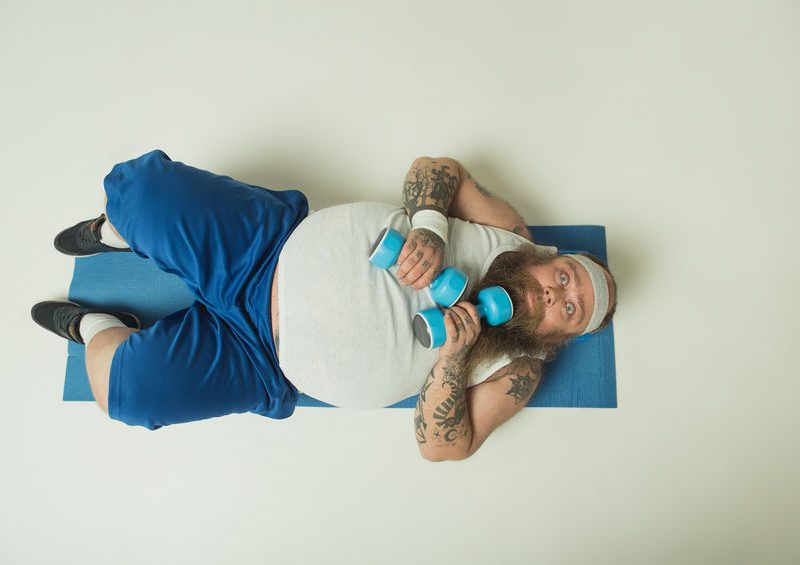
October is traditionally a time for beers and fears, but while Bavarian festivals abound and horror movies play on loop, it’s easy to forget in all the fun that addressing real fear can be a huge component of what we do as movement experts.

Humans carry individual, deep-seated beliefs that are weighed against any new information that may conflict with those beliefs. This can significantly damage the relationship with that human offering such new info. We work with barriers all the time as fitness pros, but what’s the secret to making sure overcoming those barriers happens quickly and safely, and in a way that strengthens your relationship with your clients?
Let’s cover best practices for understanding and addressing those biopsychosocial barriers, like fear-avoidance, compliance, and frustrations.
Fear of Failure
“This is the goal, not the expectation”
Before instructing a client poised to take on a new challenge, demonstrate it for them prefaced with this phrase. Show them how a boss does it. Give them something to aim for.
These seven words can be so powerful to your clients. Firstly, it allows them to watch you and understand the movement. This gives you more credibility (not to mention actively training your own ability – show off that motor control!!!), and allows the highly visual components of their brain to get to work figuring out that new movement. It also lets them know where they are and where they potentially can be. We all know how to do progressions and regressions, but this is where the framework for those concepts really stands out.
Most importantly, it allows you to give them a space to start a regressed movement without shame or fear of expectation. Read any blog on why New Years Resolutions don’t work: the mental barriers are built up by expectation versus having healthy relationships with goals and moderating failure. This kind of personal demonstration to your clients is especially helpful in high intensity, balance/proprioception, and mobility training.
Empathy and Rapport as Tools
“When you’re ready, no rush.”
As trainers, you have a lot of power in the lives of your clients. Developing a great relationship with your client should be the first priority, because all else follows. The establishment of rapport will facilitate greater compliance with their training and give them the feeling that they have the power and choice in the relationship. This aspect is nurtured by your language (body and otherwise). Do you ask of your clients, or tell them? Do you walk with them or ahead of them? Do you get impatient with them, or are you flexible when you notice barriers? Do you balk at expressions of fear or employ empathy to help navigate them?
Allowing for Adjustments
“Just let me know if it’s a little too much, alright? We can always change it up.”
NO PAIN, NO GAIN! While there’s some truth to that, it’s in stark contrast with the reality that pain and discomfort can be scary for some people. It may lead to all sorts of avoidance behaviors, be it procrastination or straight up non-adherence and quitting. The above quote is word for word what I communicate to clients when I ask them to perform difficult tasks that may be bumping up against their comfort zone too much or perhaps initiating a fear response.
Inevitably, we’re able to get through the exercise and from that point there’s no looking back. Consider the plateau long-gone. Why is this important? I think this is important to say because, while acknowledging the difficulty you will simultaneously demonstrate support and belief that they can overcome said difficulty.
And if they can’t perform the movement? Well, it shows you’re not judging them and you’re willing to work laterally to still meet those goals! It’s really powerful, and I think everyone should keep this in their back pocket. Typically, discomfort over a 4 or 5 out of 10 is where I start to limit or modify those experiences.
Barriers and Goal-Setting
“Whatever you bring through that door, I will work with and meet you where you’re at.”
A great example of “ghosting” in our industry is this: Rarely do clients admit to having difficulties with training, and fewer still tell their trainers they have no intention of returning. It is therefore incumbent upon the trainer to identify physical, nutritional, AND emotional barriers to their training success.
Your goal is always to help them meet their goals. Make success a seamless process by:
- Limiting patronizing behavior (be on their team, not the coach)
- Anticipating and overcoming practical barriers.
This will help keep yourself in check to make sure you’re in the right space to help. Put on your oxygen mask first; you can’t help others until you help yourself.
Maintaining Professionalism in the Face of Fear
“It’s a process, not an event”
Clients may be coming in not understanding costs, benefits of your program, may have poor exercise literacy, may lack commitment, may feel depressed or hopeless, may lack social support, may have financial or income troubles, may have differing health or cultural beliefs or any number of other issues which can impact your ability to deliver great training.
It’s up to us as fitness professionals to improve communication, build trust, outline expectations and create a sense of participation in decision making with our clients. When I was in sales, the most expensive and extensive training yielded the following lessons to create that ideal client atmosphere:
1. Prepare – Know your sh*t
2. Greet – Always implement your own flair to say “Hi” and make your people feel welcomed to a welcoming place of welcome-ness.
3. Discover – Ask what’s going on with them today and address that human component first (there’s a reason why every martial arts class starts with meditation). Then get focused on the training!
4. Advocate – The “because” or “why” behind the work.
5. Support – Anything you can do that an app on a smartphone cannot. Show them why showing up for you is valuable and how you can be there for them.
6. Close – End with talking about goals or expectations and leave them feeling inspired to come back.
7. Customer for life – Repeat this process as necessary and that client turns into your #1 fan.
Understanding that we should be mindful of these concepts, not just now, but every day and with every client will make you a better trainer, and help assuage exercise-based fears and eliminate barriers that prevent your clients from meeting their goals.
References
Behavioral Medicine: A guide for clinical practice (Feldman, Christensen)
Rehabilitation of the Spine: A Practitioner’s Manual (Liebenson)






